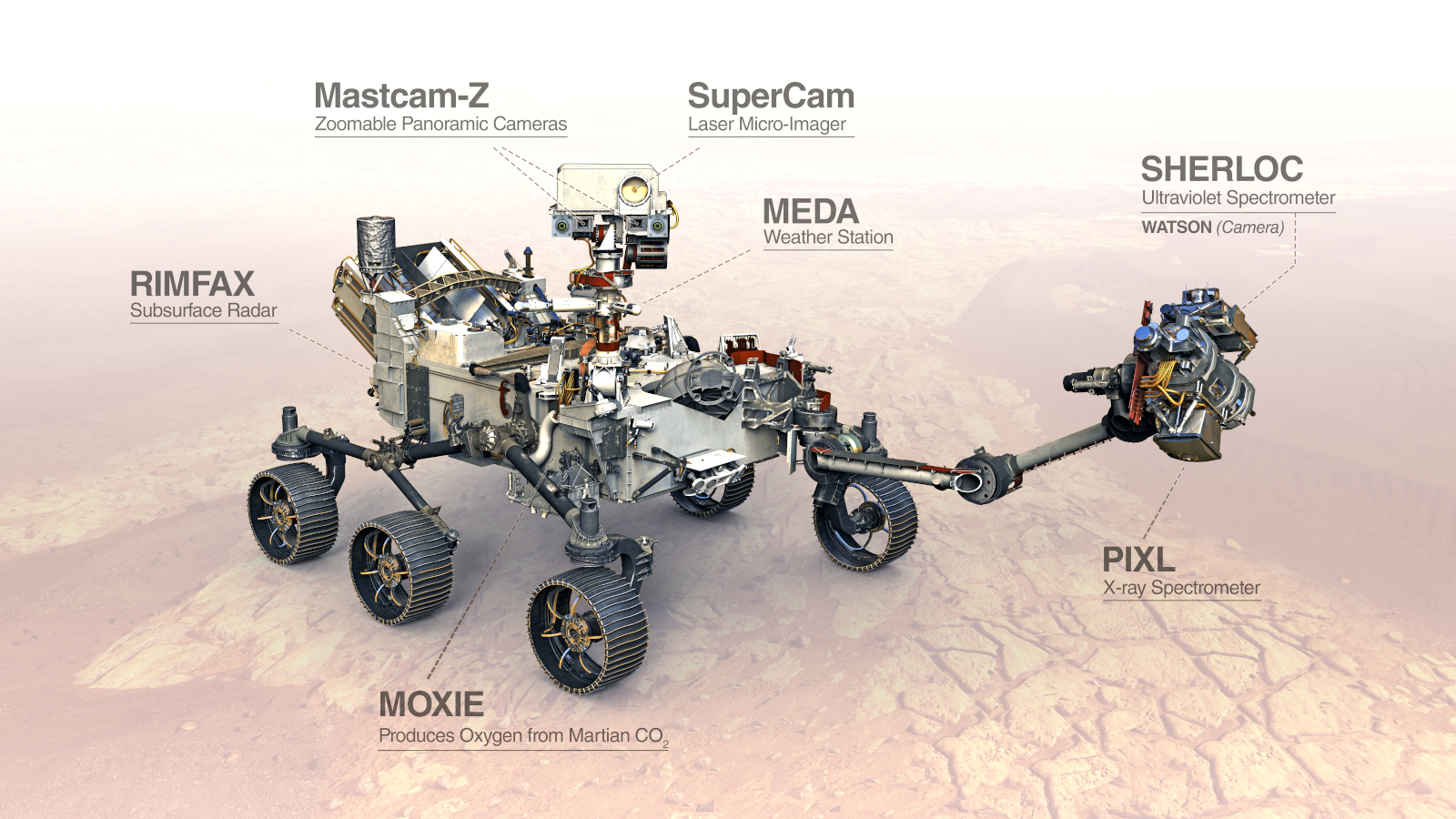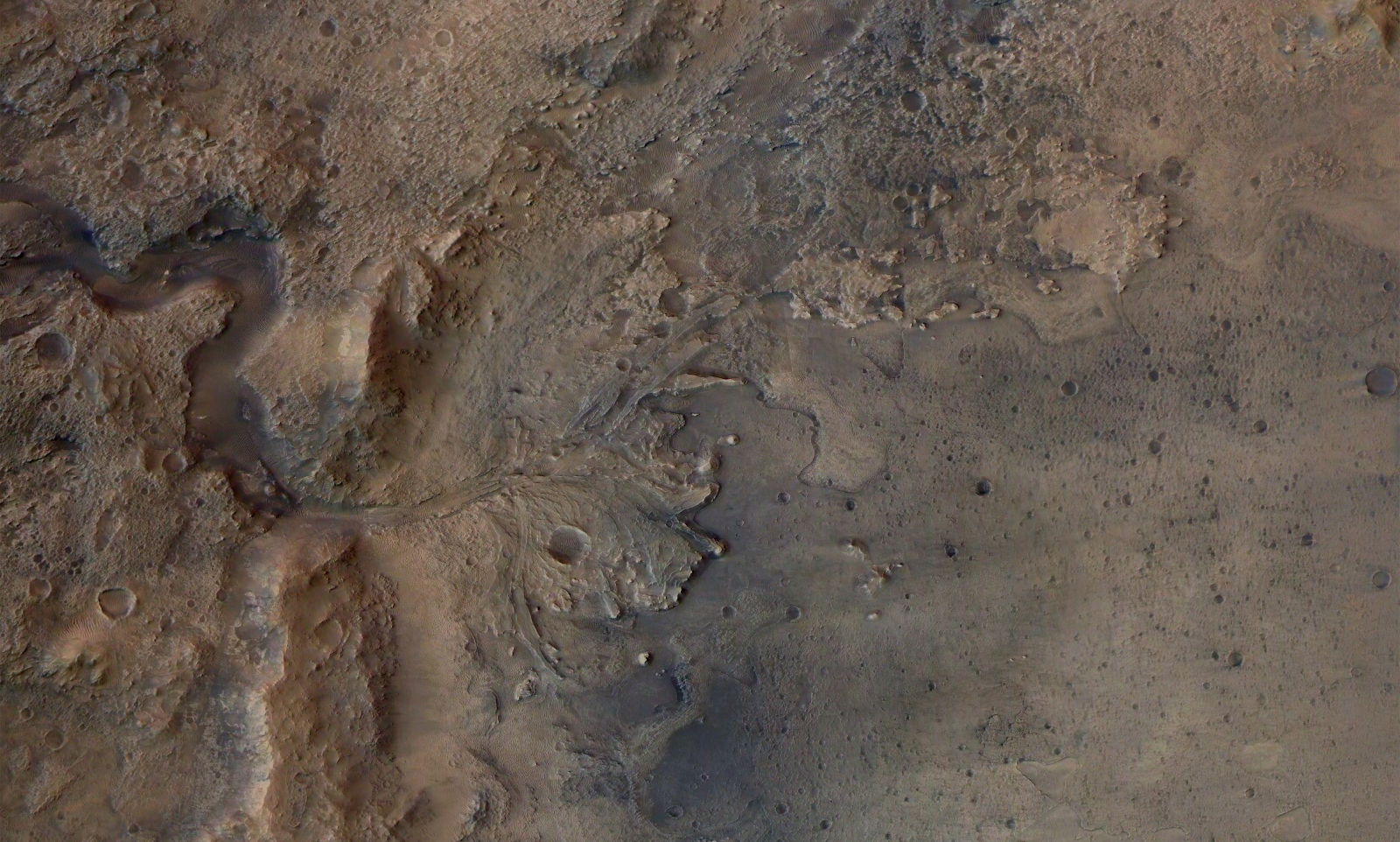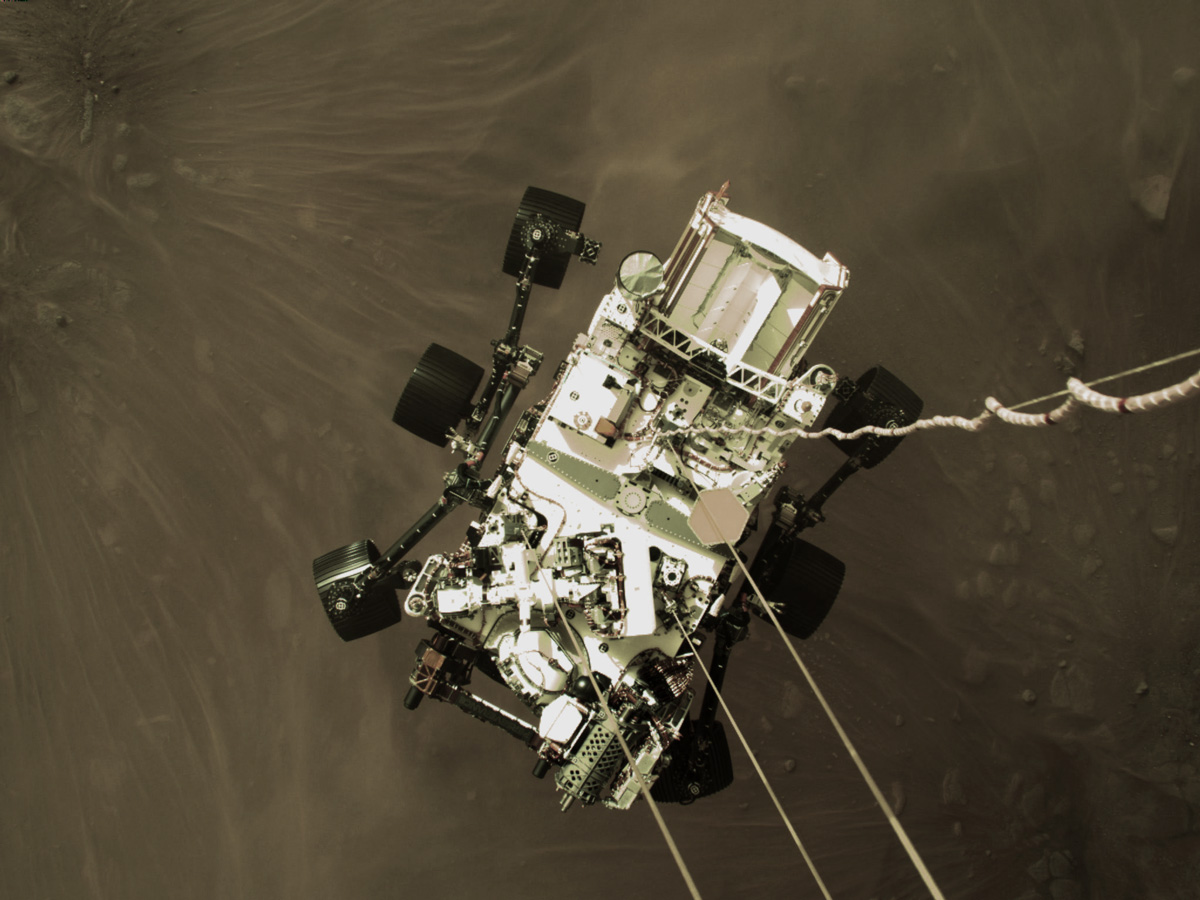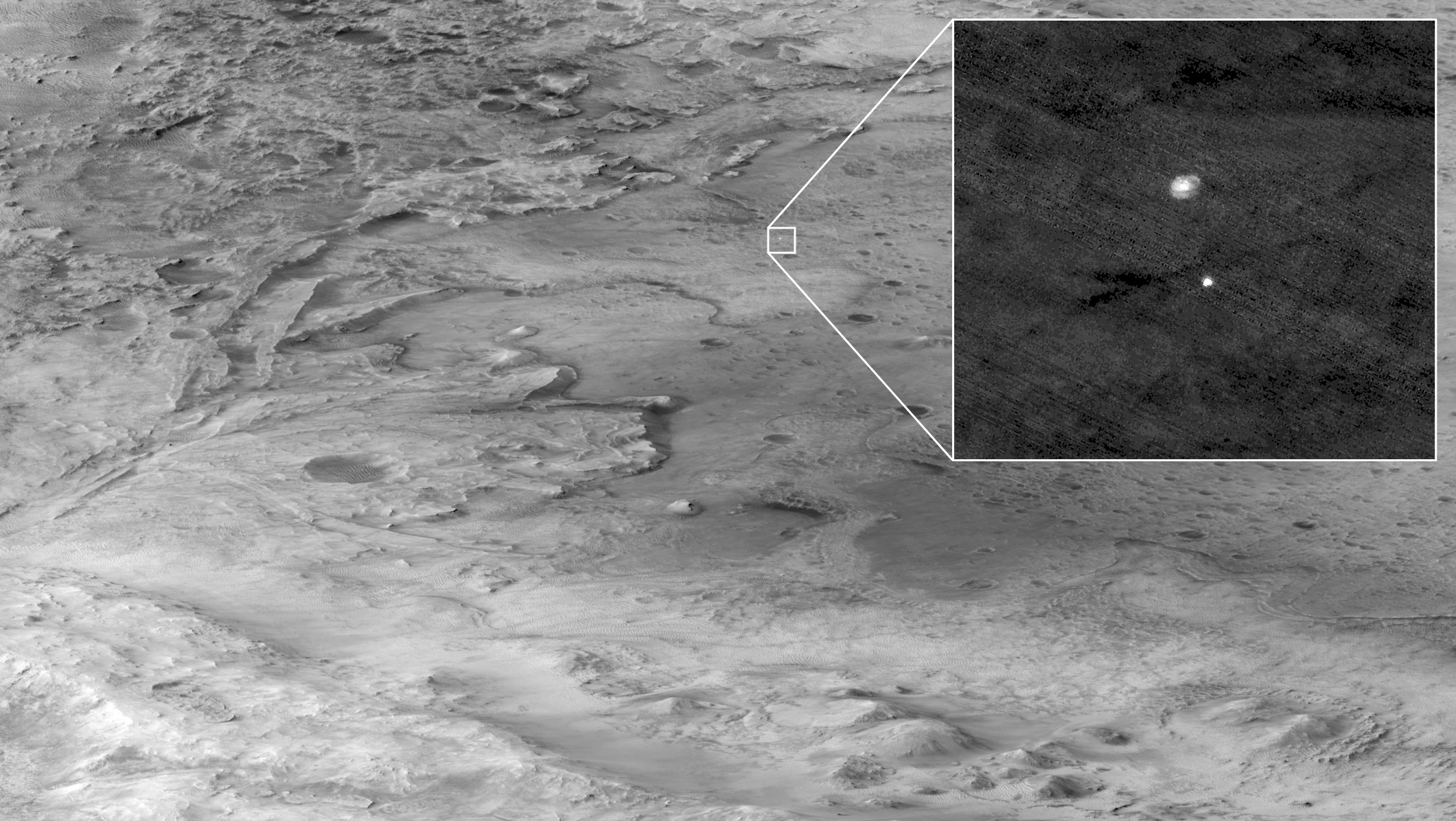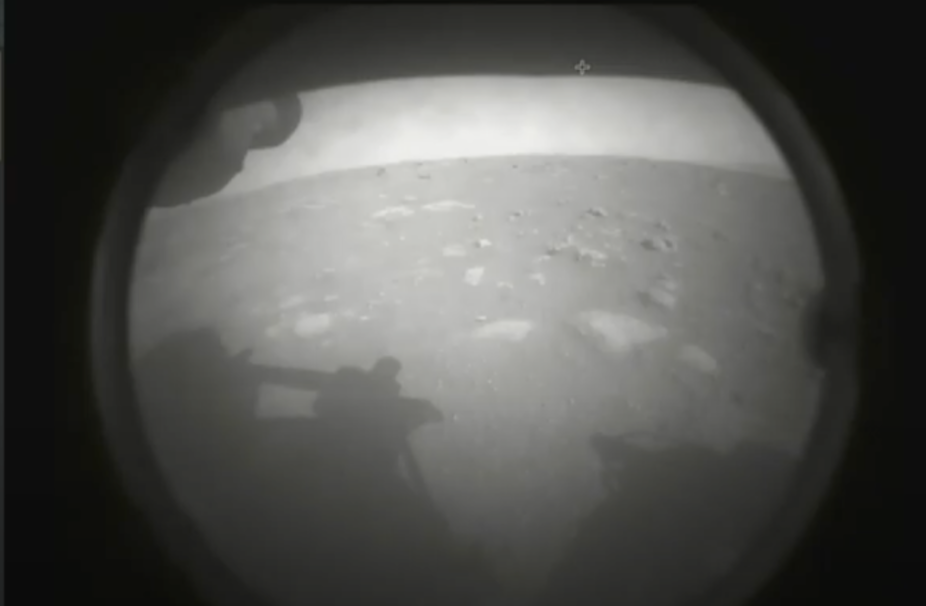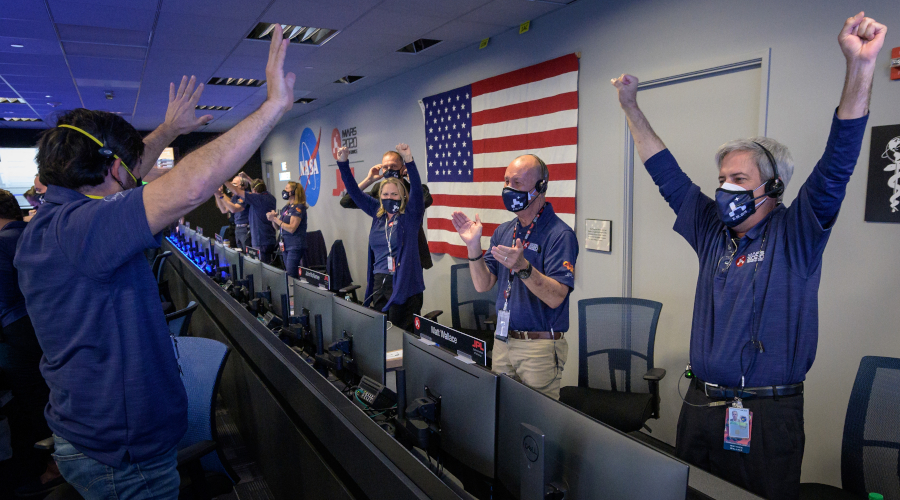Never Two Without Three
With three space probes arriving at Mars in less than a ten-day span, this month is establishing a new record in space exploration. The United Arab Emirates (with the help of Japan) and China have succeeded in placing Al-Amal (“Hope”) on February 9th and Tianwen-1 (“Questions to Heaven”) on February 10th, into Mars orbit, respectively. It is now the time US to justify the saying.
While the flight engineers at the Jet Propulsion Lab (JPL) in California closely monitor their screens, and millions of people around the world hold their breath, Perseverance, the most sophisticated scientific rover ever built, will attempt a risky descent onto the neighboring planet. Mark it on your calendar. February 18th, 2021, 3:55 p.m. EST (NASA will start broadcasting at 2:15 PM EST). If successful, this could lead to the greatest scientific discovery in human history: the confirmation of life or even abiogenesis on another planet.
In the following weeks, we expect further information on the obtained results. As we anxiously await that moment, we at Ad Astra would like to collaborate in spreading the word, and in attempting a few initial reflections.
Now You See Me... Now You Don't
One cannot simply go to Mars at one's own convenience, at least not in an efficient manner.
It is only every twenty-six months that, according to their revolutions around the Sun, that Mars and Earth are at their closest approach. These are precious moments that can be taken advantage of for enjoying the naked-eye spectacle of the red planet in its dance among the stars, for better observing it through telescopes, and for sending our spaceships to its encounter.
The fact that three spaceships are now arriving at Mars so close to each other is no coincidence. This timing corresponds to the latest of these opportunities that had occurred seven months ago.
While Al-Amal is already preparing for its daily observation of the Martian atmosphere and Tianwen-1 for sending its lander and rover to the surface, Perseverance is hours away from her most difficult moment before the beginning of her scientific expedition.
Nerve-racking Descent
You are the most sophisticated scientific rover ever built - the size of a small one-thousand-kilogram SUV, although worth around 2.5- billion-dollars. For seven months you have been smoothly traversing through cold and empty interplanetary space. The planet Mars is rapidly approaching. Hitting the surface is not your most urgent concern.
Your first obstacle will be the atmosphere, with which you will collide at roughly twenty thousand kilometers per hour. Even within the thin atmosphere of Mars, such an entry will generate immense heat. Specifically for this reason, you were equipped with a tough aerodynamic shield — a shield which will have to withstand temperatures of up to 1300 degrees Celsius if you are to survive entry — conditions that are sufficient to melt cast iron. If you manage to orient this shield correctly during your descent you will have made it only past the first obstacle. Now you will be approaching the surface at supersonic speeds. At this time, with around 200 million kilometers separating the rover and mission control, any one way communication will take around 12 minutes. This landing must be completed without any assistance from Earth.
The “Seven Minutes of Terror” (the time it takes in this case for Perseverance to go from the top of Mars' atmosphere to the surface) had been a popular slogan used to describe this harrowing landing sequence, however, since NASA resumed its Mars Exploration Program (a bit more than twenty years ago), it has successfully landed four rovers on Mars, in a row. Our consistency may be reassuring, but it cannot allow us to underestimate the difficulty of the mission at hand.
Engineers have been hard at work in devising methods of safely landing on the Red Planet. Even in the case of the much smaller and lighter rovers of previous generations (Sojourner, Spirit, and Opportunity) this was an incredibly difficult procedure. One such method involved encasing the rover in a massive airbag to cushion its landing. Unfortunately such a shock-absorbing approach was clearly not appropriate for landing larger and heavier instruments. For Curiosity, which has already been roaming Mars since 2012, an agonizing succession was concocted: Upon slowing the descent with a heat shield, a specialized parachute would deploy at supersonic speeds. Then, the descent would be further slowed and brought to a hover by retro-jets. To avoid the debris and dust raised by the jets, the rover was not allowed to land using the jets. Instead, the hovering jet frame would lower the rover down using cables – a solution dubbed “sky crane”. To any engineer working on such a complex solution, those “seven minutes” must have felt like eternity. But, this method proved successful, and the approach will be used in the landing of Perseverance. Not everything is quite the same however. Perseverance carries a significantly heavier load this time and will try to descend in a much riskier location – both changes carrying immense benefits as well as risks.
Jezero Crater was chosen as the Perseverance landing site because of its promising characteristics in terms of the search for ancient Martian life. This however, comes at a cost: the terrain presents an increased risk in comparison to all of the previous landing sites in the history of Mars exploration.
In order to overcome the new dangers, two new technologies have been incorporated. These technologies immediately set the tone for the increased sophistication of this scientific explorer.
First, Range Triggering will allow the rover to decide when to open its parachute, a decision made autonomously from information received in real time during descent. In contrast to a pre-programed triggering, this incorporated flexibility will allow the landing of the rover to be much more precise. Apart from the increase in safety, landing in the correct location avoids the dangerous journey to the site of interest - one that could take several months!
Furthermore, Terrain Relative Navigation in the rover will perform a real-time comparison between the geographic panorama it sees while descending (thanks to a set of new cameras), and a photographic atlas of the location loaded into its memory. By constantly identifying various real and mapped terrain features, the rover will be able to precisely define its actual position at every moment during the descent, and to make any corrections necessary to avoid potential hazards - rough surface or an overly steep incline in the terrain, dead ends, cliffs. This - and much more - is probably a big part of the reason why Perseverance is referred to all over as “She” and not simply “it”.
Regarding us here on Earth, delayed witnesses of such a distant Odyssey, this time we are not going to settle for seeing things in computer animation. In the age of the internet and media, she will share online her vertiginous battle against friction and gravitation, as it really happens on Mars.
A Heavier Backpack
The size of a car... with six motorized wheels, a 2-meter strong articulated arm and a plutonium based power source (solar panels are too vulnerable on a dusty planet). Perseverance looks like (and structurally is) a twin of Curiosity.
Contrary to this structural similarity, Perseverance was conceived to perform far more advanced experiments and activities in a much more promising and at the same time demanding environment than those of all the previous rovers. In addition to several improvements to its basic structure (like larger and more resistant wheels, for example), it is equipped with significantly more advanced instruments than its predecessor.
SHERLOC, WATSON, and PIXL (sic) are both perhaps fitting, but at the same time intriguing names for instruments on another planet. What case are SHERLOC and WATSON going to work on Mars? How closely together will they work? What about MOXIE?
High Expectations
With a minimum life expectancy of 1.5 Martian years (app. 3 Earth years), an aspired 15 km route ahead, and an impressive set of tools and ambitions, Perseverance promises to execute an extraordinary scientific expedition (especially so when you consider that our engineering usually surpasses these lower bound estimates significantly).
Its main purpose is the search for traces of life on the red planet. Although the existence of present life there is improbable, it is not discarded, and Perseverance will pay attention to any signs of it. Its main purpose is to look for indications of ancient life, one that could have existed billions of years ago, when the atmospheric conditions on the planet were radically different than those of the present.
Jezero Crater clearly shows the marks left by a river that existed some 3.5 billion years ago, cutting its edge and living inside the typical marks of an extended sedimentary delta. Opposite of it, another stream of water served as a discharge for a crater filled with water. A terrain like this has never been visited before in any previous mission.
In those times, before Mars had started to lose its atmosphere, and the benefits of its greenhouse effect, Mars and Earth were remarkably similar in terms of their environments. With high enough temperatures, rivers, and large bodies of liquid water, the situation was much more favorable for the development and maintenance of life back then than it is in today's cold, dry, and Ultra Violet irradiated Mars. Life was already present on Earth, under elementary unicellular forms and rudimentary colonies of them.
The cumulative layered superposition of these has left distinctive stratified formations - known as stromatolites - that are among the oldest records of life on our planet. Rocks with similar structures to those present on Earth could eventually be found at Jezero Crater and there would be in that case a clear direction for further investigation.
The most important activity Perseverance will perform in relation to the search for life, is not the in-situ observation or testing of materials, but rather the preparation samples to be brought back to Earth. Here on Earth, there are enormous amount of lab instrumentation and resources available (among a large scientific community) that could participate in the study of those samples, that of course could never be included within the limited confines of a rover. Perseverance will take the first step in these complicated processes, by carefully selecting and preparing these samples. A future two-space-ship mission set by NASA in collaboration with the European Space Agency (ESA) will be responsible for bringing these samples back to Earth. Starting in 2026 this process would be set to achieve its final goal in 2031, with the samples sent to a specially prepared top bio-hazard safe installation still to be defined.
Apart from studying the possibilities of existence of indigenous life on Mars, Perseverance will prepare things for the arrival of life coming to Mars from Earth. MOXIE will test a method of producing oxygen from the carbon dioxide found in Mars’ atmosphere, so that it can be available to humans arriving on that planet in near future expeditions, without the need of carrying it from Earth.
Finally, carried under the Perseverance belly, there goes Ingenuity, the first helicopter ever to attempt flight on another planet. Considered a “high risk/high reward” experiment, it might open a whole new range of possibilities in Martian - and planetary - exploration. Spinning its blades ten times faster than helicopters on Earth, Ingenuity will attempt to take some panoramic vistas of Perseverance from above and help her in the long journey by exploring the terrain ahead… Who knows? Maybe the days of lonely Mars rovers roaming on a cold, windy planet are over.
Mars and Us
If Perseverance succeeds in its imminent descent, there will be a total of eleven working machines on or around Mars, with others already heading to the launch pad or being planned (Exomars 2022, Mars Sample Return), adding to a long list started fifty years ago with Mars 3 in 1971, and Vikings I and II in 1976. They are part of a broader space exploration that has already carried human artifacts beyond the solar system.
Life, for humans, presents itself as an open question: its origin, its end. When facing the whole impact of this crucial and elusive question, at all scales -planetary and personal-, it is science, along with philosophy, which do not rush to conclude it too quickly, but rather help in keeping it open and fertile. In this respect we might want to consider these machines, not as caprices, but as extended senses of a deep human drive. Embraced as a species, this intellectual endeavor should help in finding more precise coordinates for us in the vast context of the Universe.
Here at home, it should allow us to achieve a more adequate relation with all other living beings, part of the fragile Earth biosphere.
Go Perseverance! Go!...
Mars 2020 Perseverance Rover Follow-Up
Below we collected the most recent information and data related to Perseverance rover. Last updated on 02-23-2021.
Latest
Archive: https://mars.nasa.gov/mars2020/timeline/landing/watch-online/Raw Images: https://mars.nasa.gov/mars2020/multimedia/raw-images/
[02-22-2021]
See Mars Like Never Before! NASA's Perseverance Rover Sends New Video and Images of the Red PlanetNASA captures FIRST SOUNDS on the surface of Mars
Video credts: youtube channel CNET Highlights
Perseverance Rover’s Descent and Touchdown on Mars (Official NASA Video)
[02-18 to 02-21-2021] – Landing and First Images:
NASA Science Live: We Landed on Mars [Sign Language Translation]NASA holds a press briefing after the Perseverance rover's landing on Mars (LIVE) | USA TODAY
Touchdown confirmed! Watch NASA Perseverance Rover land on Mars (with first image)
Mission Control Live: NASA Lands Perseverance Mars Rover (360 video)
Comment: This is a video to be watch from a cell phone. Moving it around you can have a 360 degrees immersive experience. You can also select the icon on the low right corner (glasses) to have split images. They are to be used by means of a 3D steroiscopic frame, but you can also train yourself to see them naked eye, by looking at each image with each eye until both images fuse into one and producing with 3D relief effect.
Selected First Images:
References
NASA Official Sites:
Watch NASA’s Perseverance Rover Land on Mars!
https://www.nasa.gov/perseverance
https://mars.nasa.gov/mars2020/
General Information:
Mars Perseverance Rover: Everything you need to know!
Mission Overview: NASA's Perseverance Mars Rover
Regarding the Samples to be brought to Earth:
Concepts for Mars Sample Return
Architecting the NASA Mars 2020 Perseverance Rover Sampling and Caching System - Matthew Robinson
NASA | Mars 2020 Perseverance Rover Mission Sample Return Briefing



